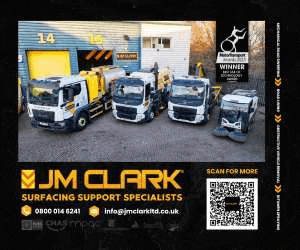Produced in conjunction with crushing equipment manufacturer Sandvik Mining and Construction, the revised guidance notes address a number of potential hazards associated with track-mounted mobile crushers.
“Although thankfully not on our members’ sites, there have been fatalities involving jaw crushers and the Health and Safety Executive is taking a very keen interest in their safe operation,” said NFDC chief executive Howard Button.
“The HSE is seeking to outlaw the practice of having an operative on the machine’s platform while it’s in operation to protect him from being struck by an excavator’s bucket, avoid possible whole body vibration, limit exposure to noise and dust, prevent him falling into the crushing chamber and to avoid him being hit by material ejected from the crusher’s jaws. We are similarly keen to avoid these potential hazards but we are also keen to ensure that any guidance reflects the nature of our business and are not simply a set of modified rules derived from a quarry guidance.”
Quarry vs recycling duties
There are numerous differences between a jaw crusher in a quarry processing virgin aggregate and a jaw crusher on a demolition or recycling site processing a variety of materials. Key among these is the presence of steel, tramp iron and other contaminants in the feed material.
“The primary reason a man is stationed atop a track mounted mobile crusher is to watch for materials that might cause a blockage such as steel reinforcing bar, or worse, a girder section. That is something quarries simply don’t have to contend with,” Button asserted. “These are, however, ever-present dangers in a demolition or recycling application and operators have to be vigilant to avoid blockage, bridging and damage to conveyors. Our guidance notes reflect the differences between these two distinct applications but are still designed to safeguard our operatives.”
Preparation is the key

The revised mobile jaw crusher guidance notes make a number of recommendations. Perhaps the most important of these is the preparation of material prior to crushing. “The segregation of construction and demolition waste prior to crushing is vitally important,” Button said. “It helps ensure a high quality and saleable end product and it is the only real way of ensuring that tramp iron doesn’t make it into the crusher jaws.”
There are numerous solutions to this pre-sorting conundrum including pre-screening systems, hand-picking, and even pre-processing with a crusher bucket, for example. All will have their place in certain applications but all are still likely to require a fall-back position.
“The Health and Safety Executive believe that a platform-mounted mini excavator equipped with a hydraulic breaker or a dedicated pedestal-mounted breaker boom negates the need for a man to be stationed on the crusher during operation,” Button said. “But once again, it is import to differentiate between a demolition site and a quarry. In quarries, the crusher isn’t subject to height restrictions during transportation. Quarries also have plenty of room to spare while on an average demolition site, space is at a premium. These are important issues that need to be addressed.”
Shaking all over
Another key issue to be addressed by the new guidance notes is the often emotive subject of whole body vibration. The HSE has already made it quite clear that operatives stood on a working mobile crusher would be considered to be exceeding whole body vibration limits and to be well above action levels for noise emissions.
“We have been aware of the long-term effects of whole body vibration for a number of years, although primarily related to other types of mobile plant and equipment. As the demolition sector embraces ever more efficient recycling methods, the use of mobile crushers will continue to become increasingly widespread. We will, therefore, have to address the subject of vibration on these highly specialised machines as well. New technology such as remotely-controlled operation and CCTV cameras positioned within the crusher chamber may ultimately help make mobile jaw crushers safer,” summarised Button.
“But, for the time being, it is our responsibility as an industry to help protect our operatives. And the revised guidance notes will play a key role in that task.”
Got a story? Email news@theconstructionindex.co.uk



